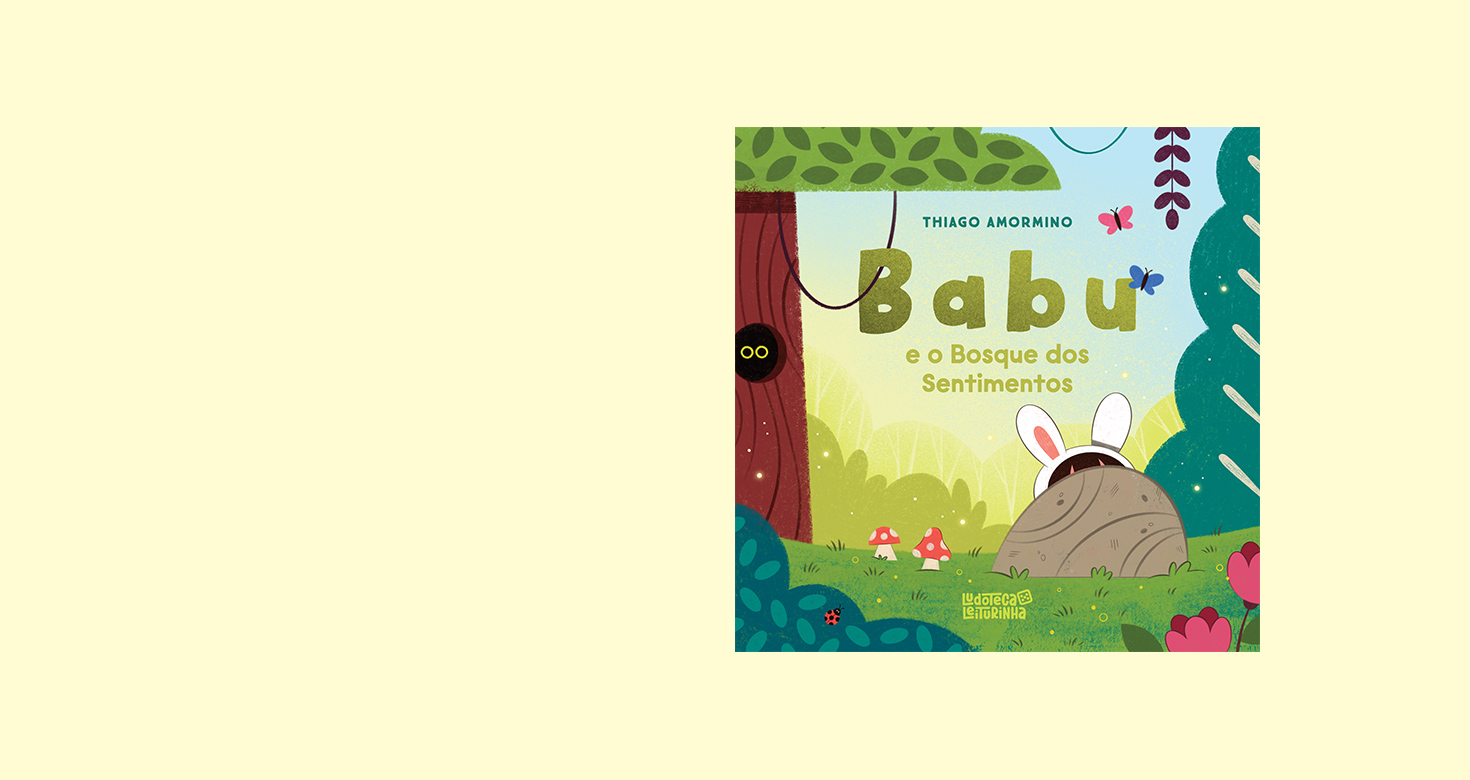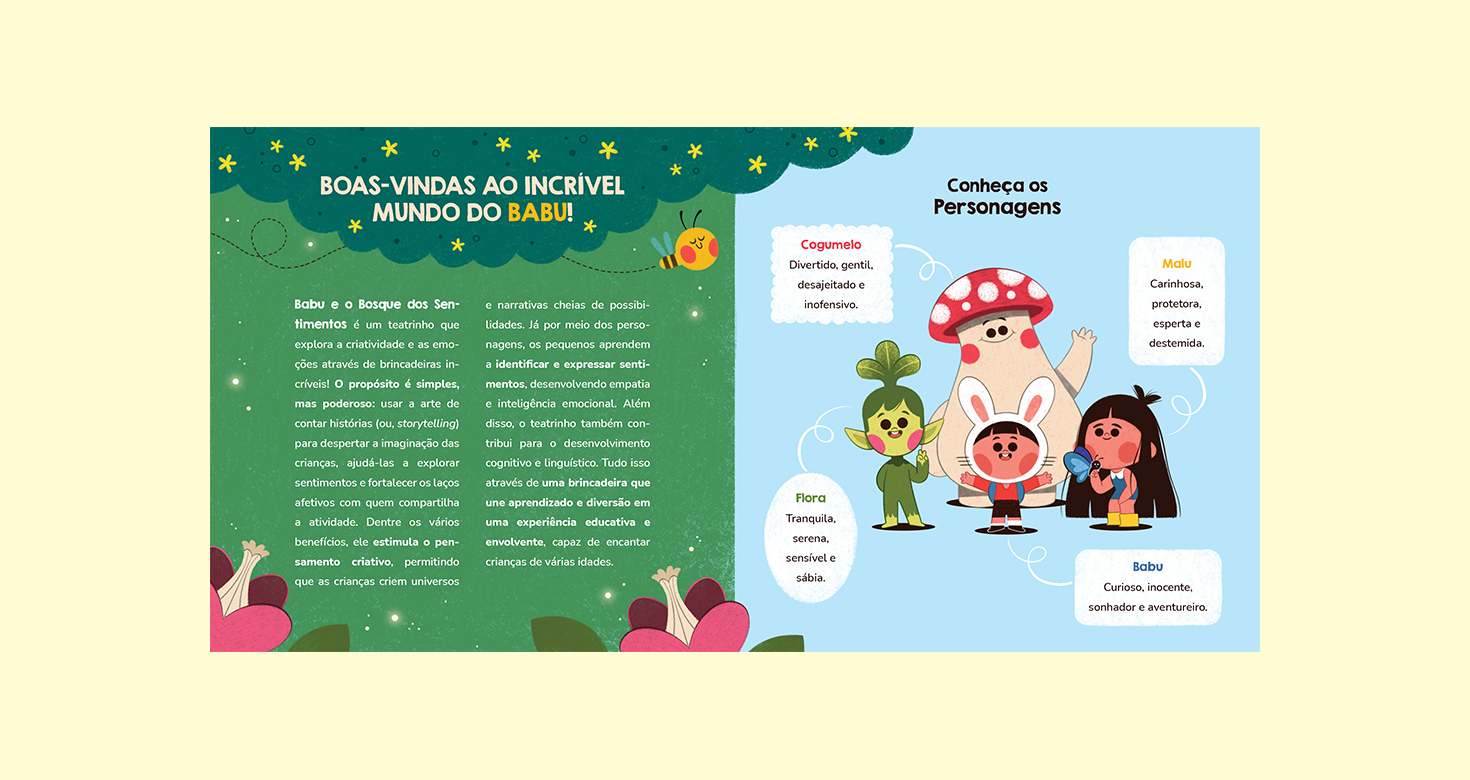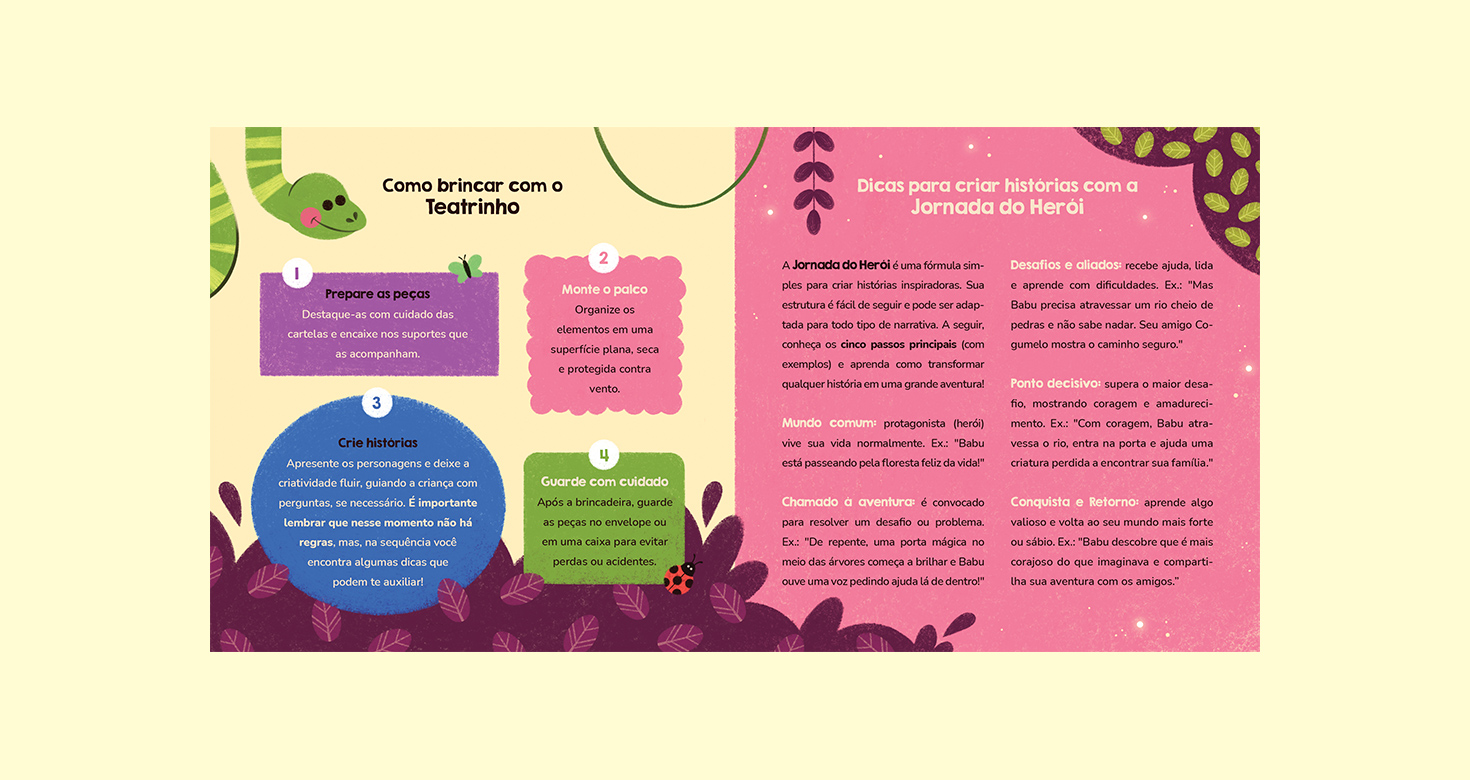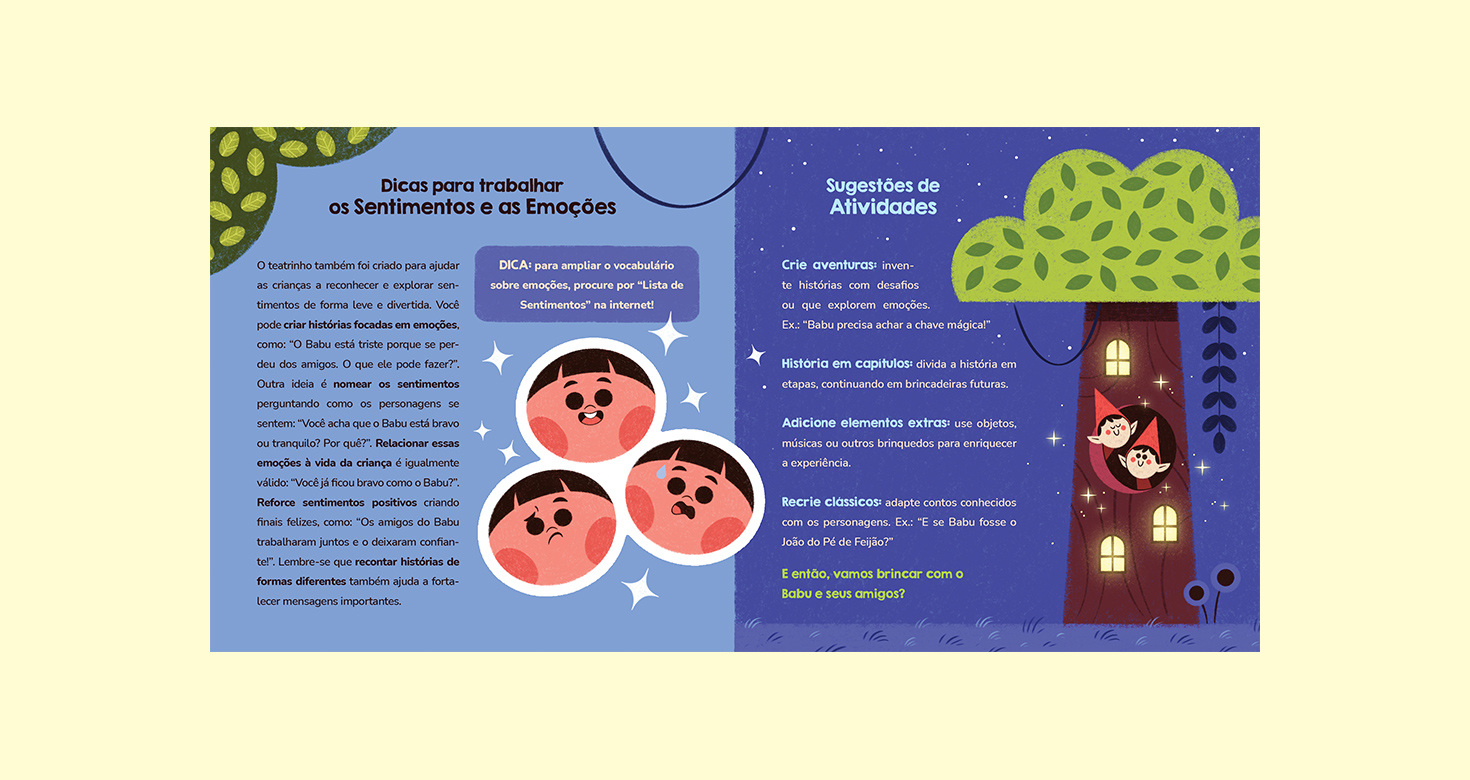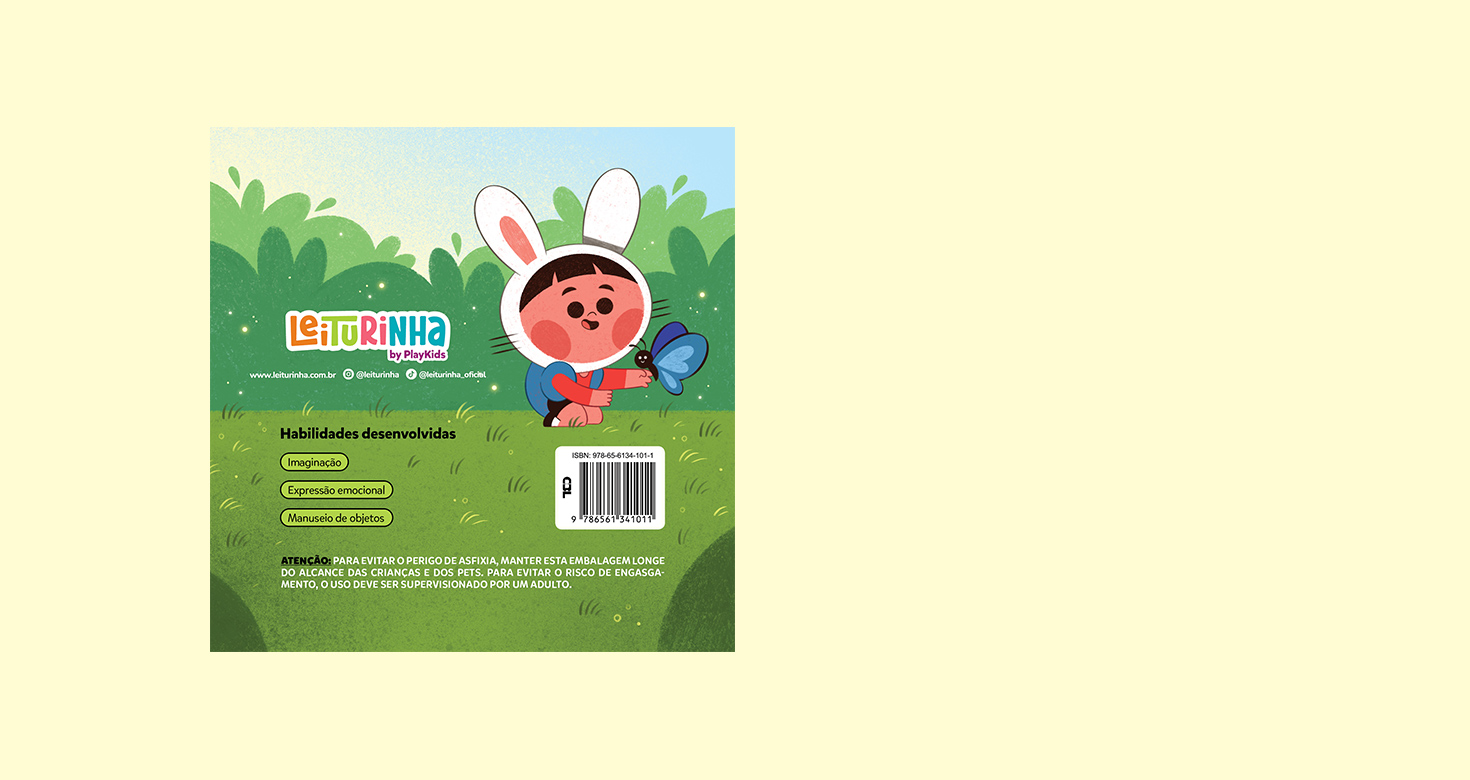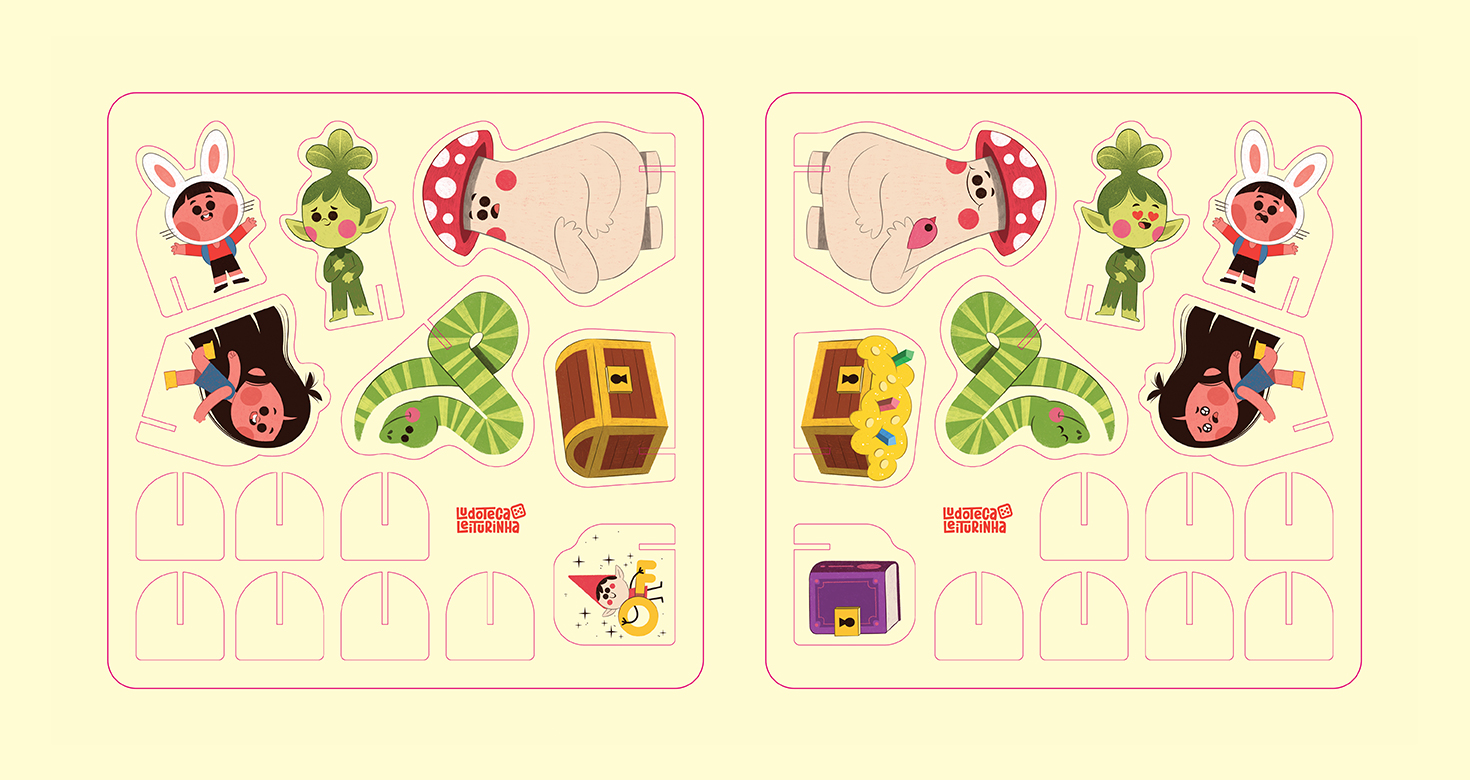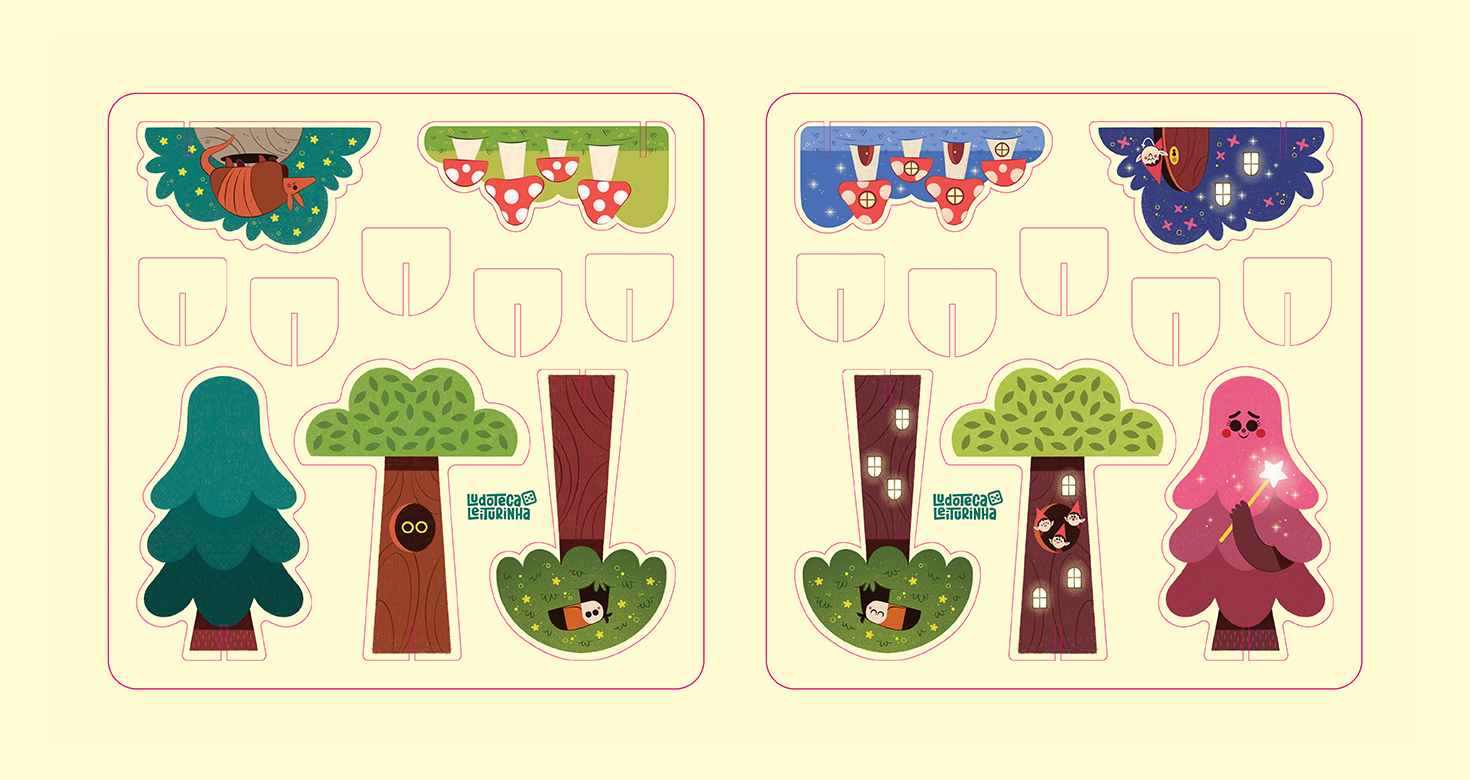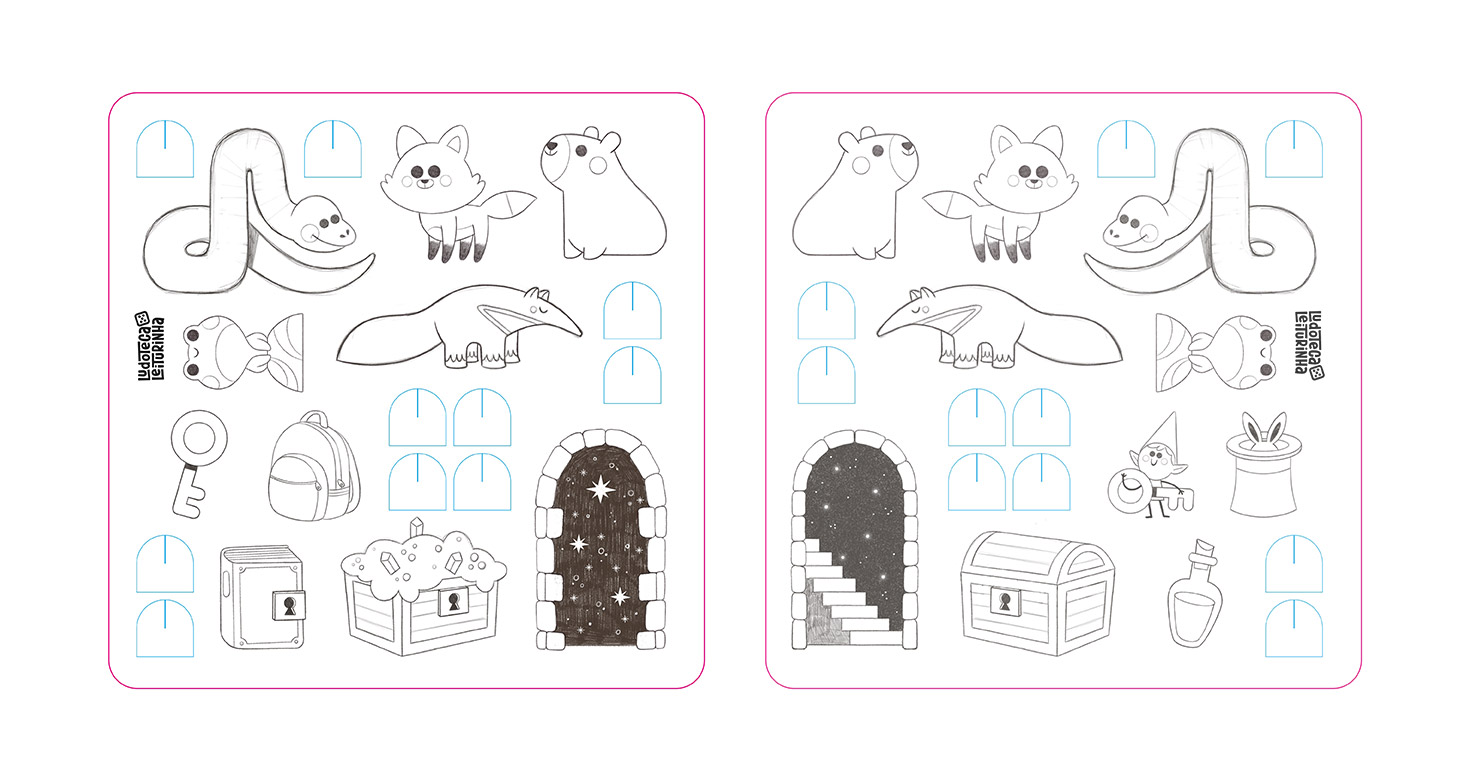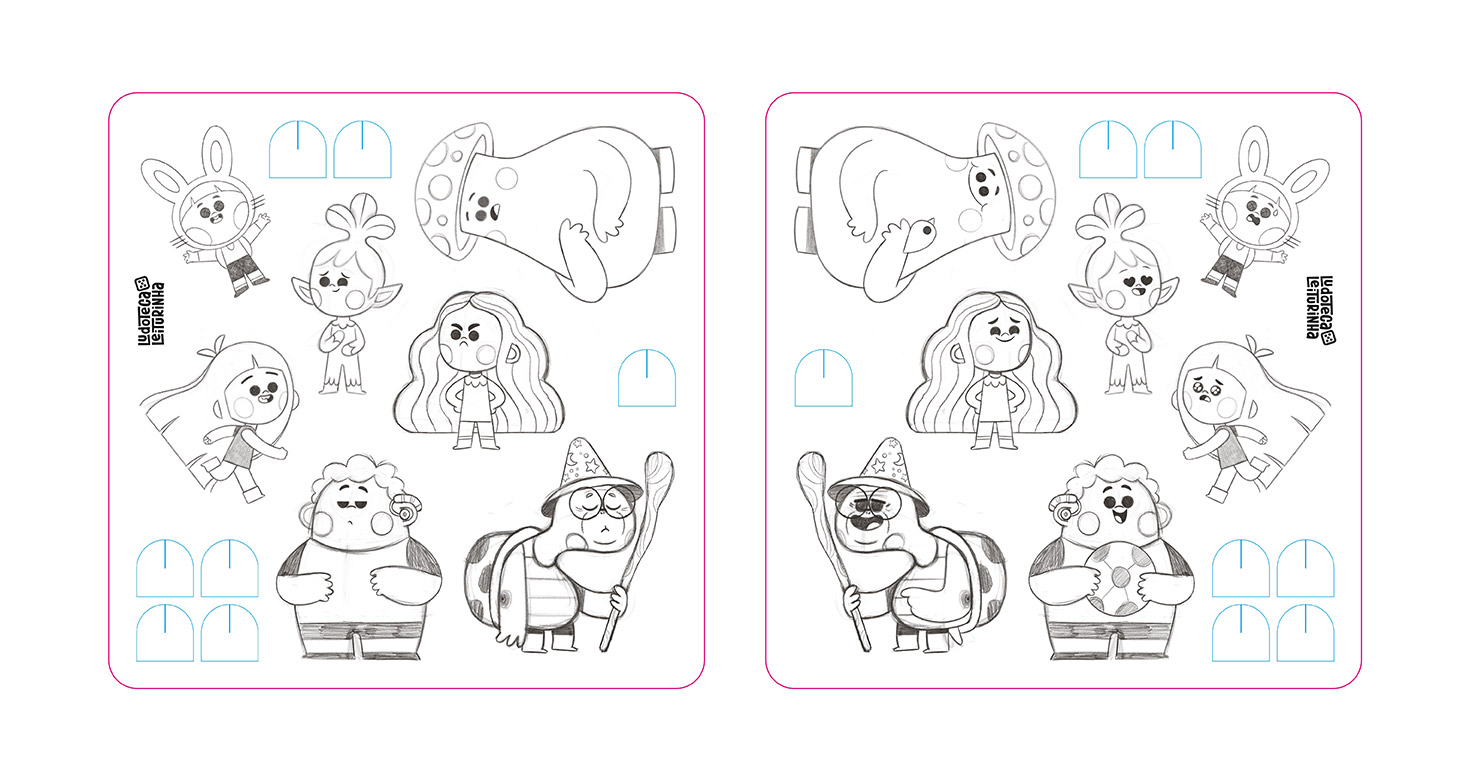Behind the Art:
Creating 'Babu and the Forest of Feelings'
Leiturinha, 2025
Shortly after finishing the book Where's Babu?, I received an invitation from the Leiturinha team to dive once again into this dear little universe. This time, the idea was to create a special item for Ludoteca, a branch of their subscription club dedicated to sending playful and educational materials for child development. The proposal was to develop an interactive paper theater, from Babu’s world — something that would spark creativity, storytelling and emotional awareness in children, while strengthening the emotional connection already initiated by the book.
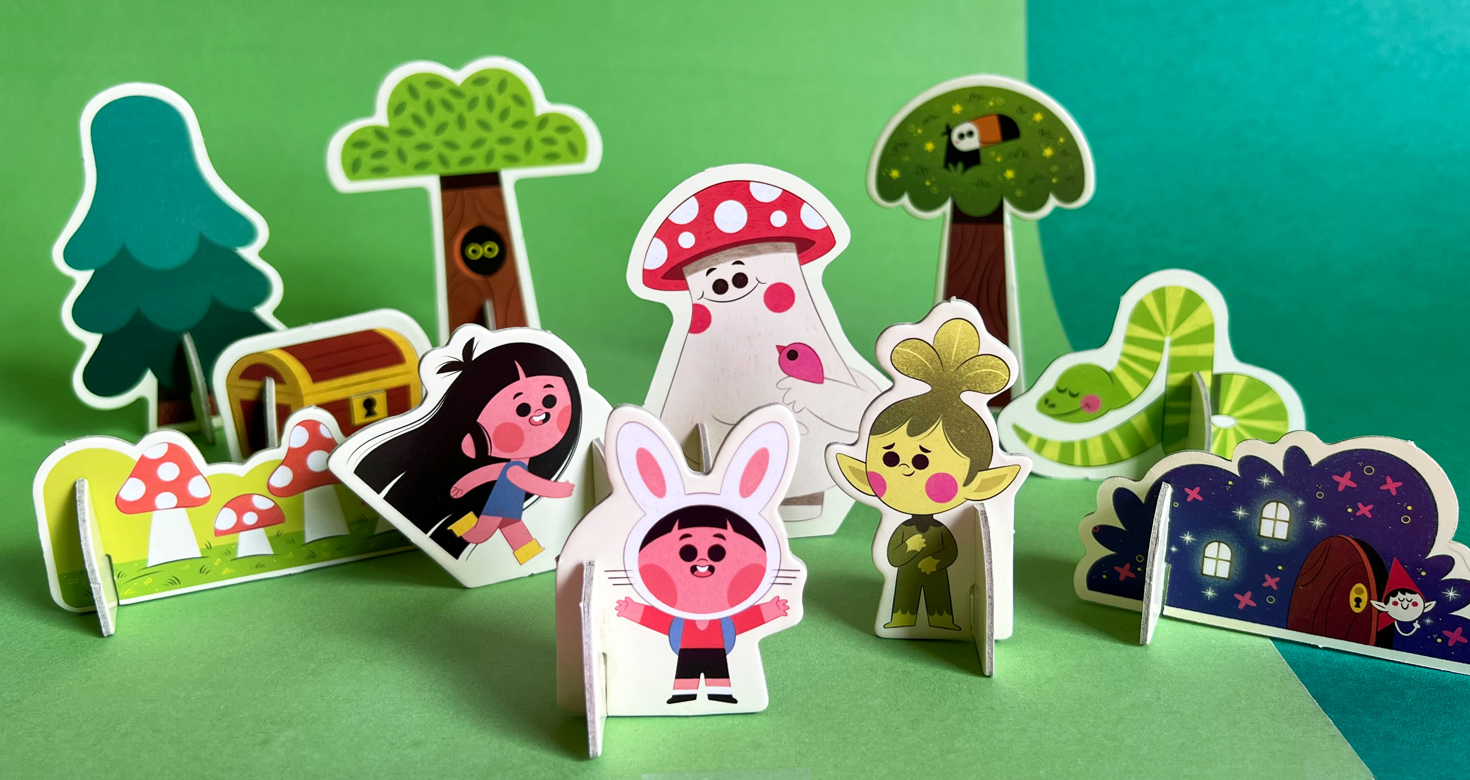
Ludoteca has a well-defined format for its products: an envelope containing an 8-page booklet and two sheets of punch-out pieces printed on thick paper. My challenge, then, was to translate Babu’s sensitive and magical universe into this format — and also within the available budget. That's how the project Babu and the Forest of Feelings was born!

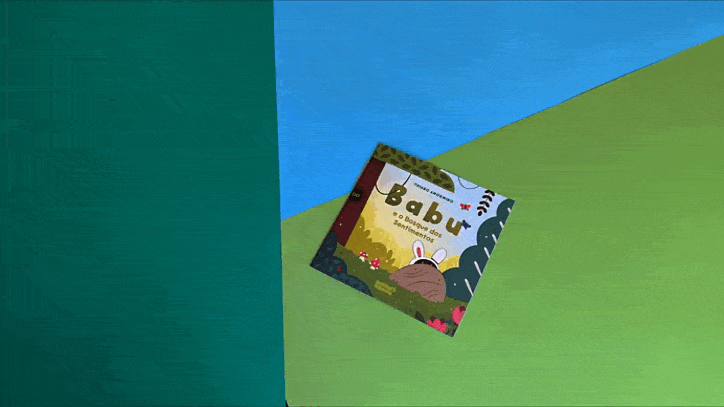
As usual, before opening the first file or drawing a single line, I dove deep into the conceptual phase.
I like to think this habit comes from my background in graphic design, where we learn that concept is everything — or maybe it’s just my personal touch (haha). It’s this early immersion that helps me align expectations and make stronger creative decisions later on.
A booklet for grown-ups to play with children
The accompanying booklet serves as a small guide for those mediating the playtime, usually parents, caregivers or educators. It needed to include clear instructions, without losing its playful and affectionate tone. With only 8 pages to work with, I decided to organize the content into six key sections:
1. Welcome to Babu’s world: introducing the theater and its goals
2. Meet the characters: names and key traits of each one
3. How to play with the theater: practical tips and instructions
4. Creating stories with the Hero’s Journey: a simple, accessible storytelling guide
5. Exploring feelings and emotions: how to talk about sensitive topics through play
6. Activity ideas: extra ways to use the pieces beyond the emotional theme
Spreads of the booklet design
This structure helped me balance playfulness with pedagogical guidance. Even though the final audience is made up of children, the booklet’s content had to connect with adults in a warm, clear and practical way.
Pieces that tell a thousand stories
The two punch-out sheets contained all the pieces that would bring the theater to life. And here, I had to be extra strategic: there were limitations in space, size and safety, especially considering the target age group. It was essential to avoid any parts that could pose risks to small children.
That’s when I had the idea to use the back of each piece as a second narrative opportunity. In other words, each element would have two sides, with distinct visuals, doubling the creative potential of every piece.
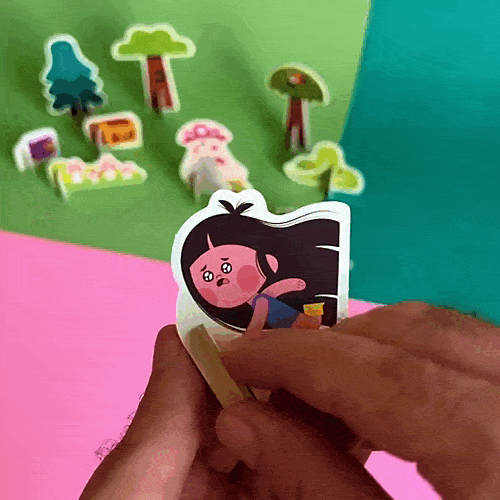
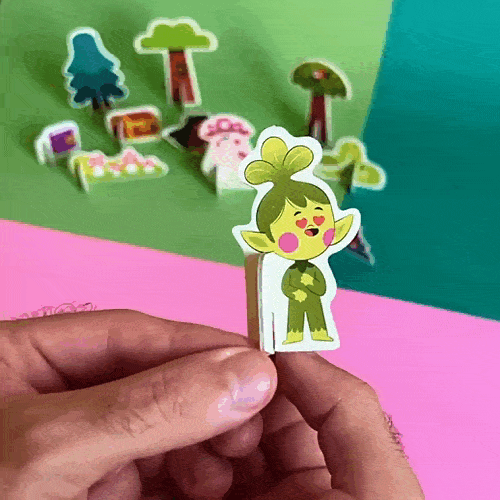
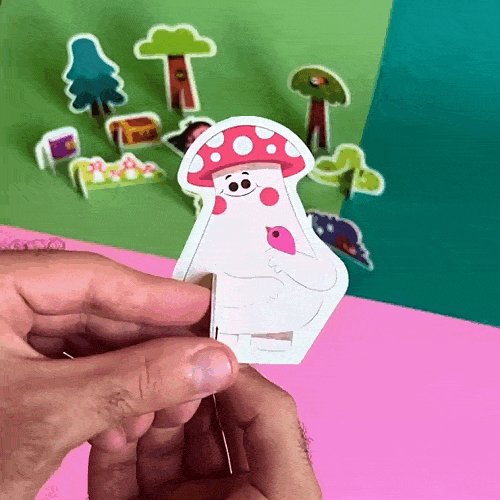
One sheet was dedicated exclusively to characters. On it, each side featured different facial expressions, helping children explore emotions like joy, sadness, surprise, and fear. The other sheet focused on scenery elements. On one side, I illustrated a “real” forest, and on the other, its “magical” version, inspired by the enchanted setting of Where's Babu?. Light and dark, real and imaginary, reality and fantasy.
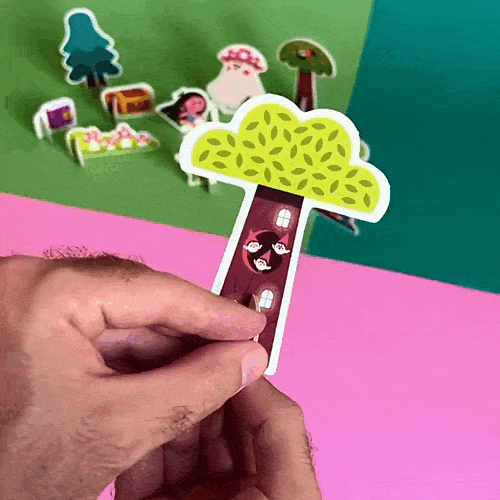
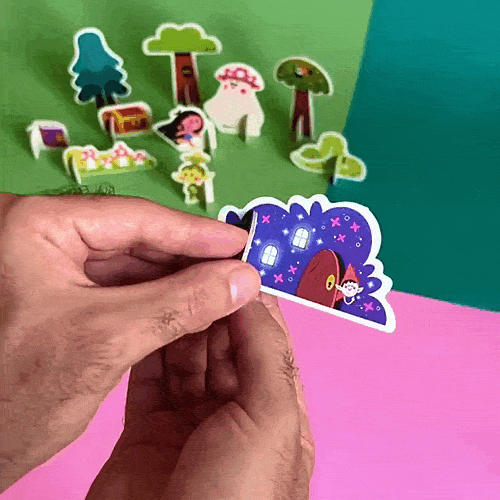
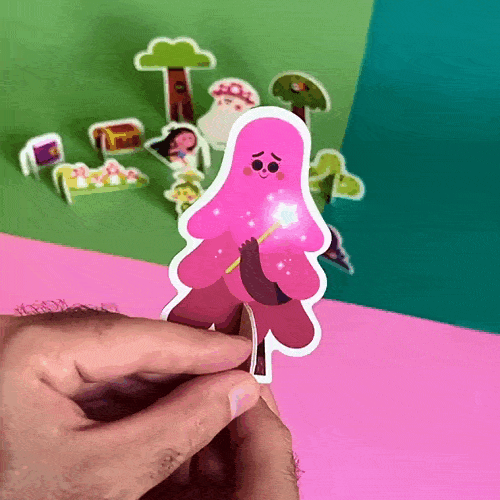
Creating also means letting go
During the process, I developed a huge list of ideas, with dozens of characters, magical objects and scenery elements. I organized everything into three main groups:
Group 1: main and secondary characters
Group 2: forest vegetation and background elements
Group 3: extra objects and characters to expand imagination
Unfortunately, due to production constraints, not all of them made it into the final version. I had to cut several pieces — a hard but necessary decision. Still, I was happy with what we kept. The soul of the project remained intact.
Early sketches + final sheet with selected pieces
A '90s kid creating for today’s children
While working on this project, I kept thinking about my own childhood. I was a '90s kid, one of those who could spend hours inventing stories with anything I had on hand. No screens — just imagination.
And somehow, I wanted to bring a bit of that experience back for today’s children: quality time, presence, connection.
Maybe that’s why it felt so special to receive feedback from families after the kit was delivered. One mother shared that when the theater arrived, her daughter spent over an hour fully immersed in the experience, inventing stories with the characters.
In a world where digital presence takes up almost everything, offering an offline moment — filled with affection, imagination and bonding — makes me incredibly proud. The kid I used to be would’ve loved to receive this toy. And the grown-up I am now is deeply grateful for the chance to create it.
Special thanks
A heartfelt thank-you to the wonderful team at Leiturinha who believed in this idea and made the project happen with so much sensitivity and care. In alphabetical order: André Asahida, Bruna Ventura, Felipe Souza, Juliana Tomasello, Leticia Dallacqua, Maria Farinha.
It was an honor to create this with you.
With love,
Thiago

Instagram • © Thiago Amormino 2025
